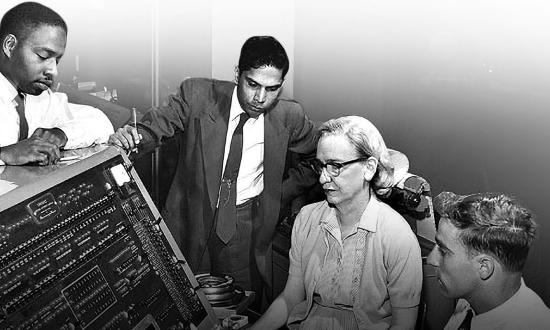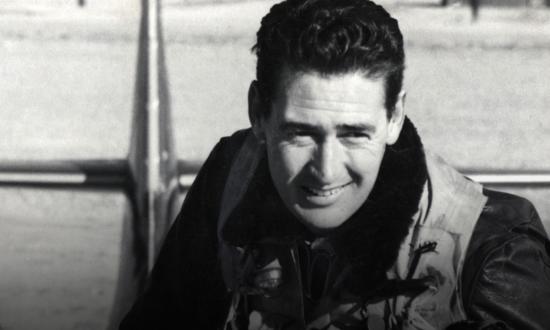Captain Jan Maarten van Tol, U.S. Navy (Retired)
Georgia Congressman Carl Vinson. He was the House Naval Affairs Committee chairman responsible for the Naval Act of 1938 and the Two-Ocean Navy Act of 1940, without which World War II in the Pacific surely would have gone on for much longer and cost far more than it did.
Dave Winkler, Staff Historian, Naval History Foundation
John W. Warner took great pride in his enlisted service with the Navy at the tail end of World War II and as a commissioned Marine Corps officer in Korea. Representing Virginia and serving on the Senate Armed Services Committee, Warner fully supported the 1986 Maritime Strategy that built toward a 600-ship Navy and strongly backed post–Cold War programs such as the Gerald R. Ford–class aircraft carrier.
Nathan Owen Rosenberg
While not technically a congressman or senator, John Adams was a delegate to the Continental Congress and had the greatest positive impact on the U.S. Navy. He created the first rules for the Navy while serving on the Navy Board. He formed a coalition that had the first frigates built for the Continental Navy. And, as President, he organized the Department of the Navy and rebuilt the fleet.
Lieutenant Commander Homer B. Hirt, U.S. Navy Reserve (Retired)
Congressman Robert L. F. Sikes (D-FL) represented the Florida Panhandle from 1936 to 1978 and did it well during the Depression and World War II. Recognizing that the pine forests and hardwood swamps offered opportunities to establish military bases in a year-round training climate, he is crediting with helping bring 14 military bases to Florida.
Commander Rick Bennett, U.S. Navy (Retired)
Samuel Smith, who served as either a congressman or senator in the Maryland delegation for more than 40 years from 1793. He proved to be the crucial person that kept the Navy from foundering on the shoals of politics in the first transition of political parties after 1800. In 1801, he served briefly as acting Secretary of the Navy until succeeded by his brother, downsizing the Navy following the Quasi-war with France and then continuing in Congress.
Trent Hone, Author of Learning War
Former rear admiral and later Representative Richmond P. Hobson from Alabama. He went against the wishes of Navy Secretary Josephus Daniels and conspired with naval officers such as Rear Admiral Bradley Fiske to draft legislation calling for a chief of naval operations. From his position on the House Naval Affairs Committee, Hobson inserted the language into the 1915 naval appropriations bill, which, once signed into law that March, created the organization we know today as OpNav.
Chief Petty Officer Edward W. Jones, U.S. Coast Guard (Retired)
Senator Charles E. Townsend of Michigan introduced a bill in the Senate on 26 May 1913 to combine the U.S. Revenue Cutter Service with the U.S. Lifesaving Service to form the U.S. Coast Guard. This resulted in the passage of “An Act to Create the Coast Guard,” effective 28 January 1915.
Lieutenant Commander Paul A. Bouchard, U.S. Navy Reserve (Retired), Life Member
Senator John Chafee (R-RI), a U.S. Marine. Before becoming a senator, he was appointed the 60th Secretary of the Navy in 1969 and left his mark on the Navy by elevating 49-year-old Admiral Elmo Zumwalt to Chief of Naval Operations (CNO) over 33 more senior officers. The youngest to ever serve as CNO, Zumwalt’s tour saw sweeping changes for the Navy. Former President Clinton described him as the “conscience of the Navy.” The USS Chafee (DDG-90) was named in John Chafee’s honor.
Captain Don Walsh, U.S. Navy (Retired)
U.S. Representative Carl Vinson (D-GA) served from World War I until his retirement in 1965. He joined the Naval Affairs Committee right after World War I and was chairman or ranking member until 1947 when the House Armed Services Committee was created. Called “The Father of the Two Ocean Navy,” he was responsible for the Vinson-Trammell Act (1934), The Vinson Naval Act (1938), The Third Vinson Act (1940), and The Two Ocean Navy Act (1940).
Marc Delamater
Congressman Carl Vinson served in the U.S. House of Representatives for more than 50 years and was influential in the 20th-century expansion of the U.S. Navy, particularly in sponsoring the Two-Ocean Navy Act of 1940 that helped create the naval force that won the Second World War.
Representative Carl Vinson (D-GA), in the 1930s. U.S. Naval Institute Photo Archive.
Captain Sidney Bernstein, U.S. Navy Retired
Representative Carl Vinson of Georgia. In a more than 50-year career in the House, Representative Vinson promoted a strong Navy and Marine Corps through his efforts in the Vinson-Trammel Act and a second Vinson bill keeping ship building strong entering World War II. He headed both the House Naval Affairs Committee and House Armed Services Committees and was known as “The Father of the Two Ocean Navy” for his efforts.
Lindsey Neas, U.S. Army Veteran
Carl Vinson, long-time House Naval Affairs Committee chairman, convinced President Franklin D. Roosevelt to include 32 ships, including 24 destroyers and the USS Enterprise (CV-6), in the 1934 National Industrial Recovery Act, co-authored shipbuilding legislation in 1938, twice in 1940, and the monumental 1942 Title V bill. Vinson’s contributions to victory in World War II are beyond measure.
Jake Jacobson
Carl M. Vinson. The longtime chair of the House Naval Affairs Committee (1931–47) was the author and moving force behind the 1934 Vinson-Trammel Act, 1938 Naval Act, 1940 Third Vinson Act, and 1940 Two Ocean Navy Act. His legislative acumen resulting in these Acts enabled our Navy to rapidly address and overcome its World War II challenges.








